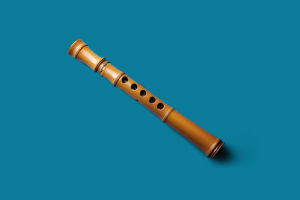The double bass, also called the contrabass, is the largest and lowest-pitched bowed string instrument in a modern classical orchestra.
Along with violins, violas, and cellos, it belongs to the string section, providing a rich, deep tone that supports the ensemble.
Beyond classical music, the double bass is also a key instrument in jazz, blues, rock, country, bluegrass, tango, and folk genres!
Similar to its smaller relative, the cello, the double bass typically has four strings that can be played with a bow or plucked. However, it is unique among stringed instruments as it is tuned in fourths, rather than fifths, with its strings usually tuned (from lowest to highest) to E, A, D, and G.
Once primarily used in ensemble settings, the double bass is now also recognized as a solo instrument, thanks to improved playing techniques and more ergonomic instrument designs in recent years.
What Does the Double Bass Look Like?
Standing around six feet tall (180cm) for a full-size model, the double bass is a towering presence in the orchestra, though smaller versions are available to accommodate different player sizes and hand spans.
Typically crafted from various pieces of wood, including an ebony fingerboard, the bass shares many features with other stringed instruments like violins and cellos, such as a wooden carved bridge, two f-holes, a tailpiece, an ornamental scroll, and a pegbox. Inside, it also has a soundpost that transfers vibrations from the top of the instrument to the hollow body.
Despite being part of the modern violin family, the double bass retains characteristics of the older viol family, such as sloped shoulders, which make it easier for performers to reach the higher registers of the fingerboard. There are two types of bows used with the double bass: the ‘French’ bow, similar to the cello bow, held with an overhand grip, and the ‘German’ bow, broader and shorter, held in a handshake position.
What is the Difference Between a Cello and a Double Bass?
At about six feet tall, the double bass is significantly larger than the cello, which stands around five feet. Though both instruments have four strings, the cello strings are tuned in fifths, while the bass strings are tuned in fourths. This results in the double bass producing a deeper sound, with a range one octave lower than the cello.
Both instruments share similar construction elements, such as wooden bodies, a bridge, two f-holes, a scroll, pegbox, tailpiece, ebony fingerboard, and an internal soundpost. However, the double bass often has sloped shoulders for easier access to higher notes. Cellists play seated in a standard chair, while double bass players either stand or sit on a high stool to accommodate the instrument's size.
How is the Double Bass Played?
The double bass is played while standing or sitting on a high stool, with the instrument leaning slightly inward against the player's body. Most often, the bass is played with a bow or by plucking the strings with the right hand.
Classical bass players learn similar bowing techniques to other stringed instruments, such as legato, staccato, spiccato, and détaché. Vibrato is also used to add warmth and expression to the tone. In jazz, blues, and folk music, the bass is primarily plucked using various complex pizzicato techniques.
When Was the Double Bass Invented?
The double bass is generally believed to have evolved from European string instruments dating back to the 15th century. Early versions of the instrument often had only three strings instead of the modern four. The instrument’s exact origins are still debated, with some scholars arguing it descended from the viol family, while others believe it emerged from the violin family.


